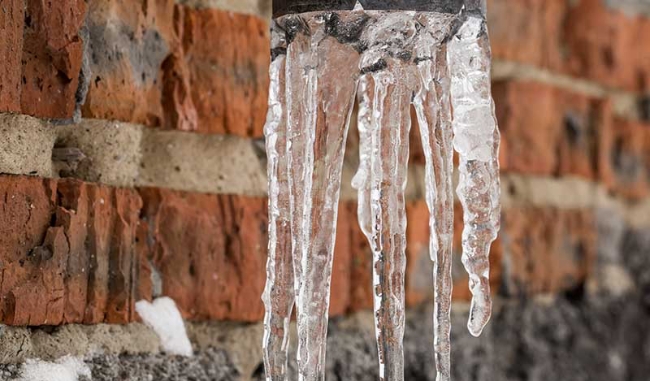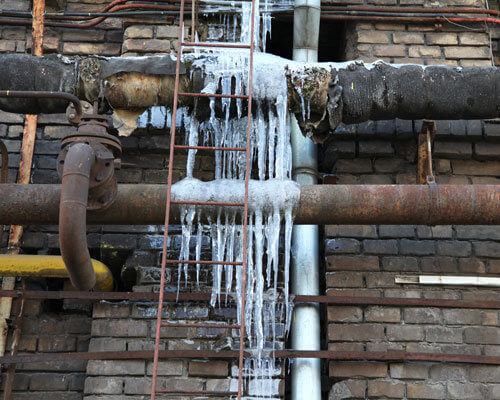Are you currently trying to find content about Prevent Frozen Pipes ?

Cold weather can wreak havoc on your pipes, especially by freezing pipelines. Below's exactly how to avoid it from occurring and what to do if it does.
Introduction
As temperature levels decrease, the risk of icy pipelines increases, potentially resulting in expensive repair services and water damages. Comprehending how to stop frozen pipes is crucial for house owners in cool environments.
Comprehending Frozen Pipelines
What causes pipes to freeze?
Pipes ice up when revealed to temperatures listed below 32 ° F (0 ° C) for expanded periods. As water inside the pipes freezes, it increases, putting pressure on the pipeline wall surfaces and possibly causing them to burst.
Risks and damages
Icy pipes can bring about water disturbances, building damages, and expensive repair work. Ruptured pipelines can flooding homes and create substantial structural damages.
Indications of Frozen Water Lines
Recognizing frozen pipes early can stop them from rupturing.
Exactly how to determine icy pipelines
Try to find decreased water circulation from faucets, unusual smells or noises from pipelines, and noticeable frost on subjected pipelines.
Prevention Tips
Insulating susceptible pipes
Wrap pipes in insulation sleeves or utilize warmth tape to shield them from freezing temperature levels. Concentrate on pipelines in unheated or exterior areas of the home.
Heating methods
Maintain interior areas sufficiently warmed, especially areas with pipes. Open up cupboard doors to enable warm air to distribute around pipelines under sinks.
Shielding Outside Plumbing
Yard tubes and exterior faucets
Disconnect and drain pipes yard tubes prior to winter. Set up frost-proof faucets or cover outside faucets with shielded caps.
What to Do If Your Pipelines Freeze
Immediate activities to take
If you suspect icy pipes, keep faucets open up to ease stress as the ice melts. Use a hairdryer or towels soaked in warm water to thaw pipes slowly.
Long-Term Solutions
Architectural modifications
Think about rerouting pipes away from outside wall surfaces or unheated areas. Include extra insulation to attics, basements, and crawl spaces.
Upgrading insulation
Purchase high-grade insulation for pipelines, attic rooms, and walls. Correct insulation aids maintain constant temperatures and minimizes the danger of icy pipelines.
Verdict
Preventing icy pipelines needs positive actions and fast responses. By recognizing the causes, indicators, and preventive measures, homeowners can shield their plumbing during winter.
5 Ways to Prevent Frozen Pipes
Drain Outdoor Faucets and Disconnect Hoses
First, close the shut-off valve that controls the flow of water in the pipe to your outdoor faucet. Then, head outside to disconnect and drain your hose and open the outdoor faucet to allow the water to completely drain out of the line. Turn off the faucet when done. Finally, head back to the shut-off valve and drain the remaining water inside the pipe into a bucket or container. Additionally, if you have a home irrigation system, you should consider hiring an expert to clear the system of water each year.
Insulate Pipes
One of the best and most cost-effective methods for preventing frozen water pipes is to wrap your pipes with insulation. This is especially important for areas in your home that aren’t exposed to heat, such as an attic. We suggest using foam sleeves, which can typically be found at your local hardware store.
Keep Heat Running at 65
Your pipes are located inside your walls, and the temperature there is much colder than the rest of the house. To prevent your pipes from freezing, The Insurance Information Institute suggests that you keep your home heated to at least 65 degrees, even when traveling. You may want to invest in smart devices that can keep an eye on the temperature in your home while you’re away.
Leave Water Dripping
Moving water — even a small trickle — can prevent ice from forming inside your pipes. When freezing temps are imminent, start a drip of water from all faucets that serve exposed pipes. Leaving a few faucets running will also help relieve pressure inside the pipes and help prevent a rupture if the water inside freezes.
Open Cupboard Doors
Warm your kitchen and bathroom pipes by opening cupboards and vanities. You should also leave your interior doors ajar to help warm air circulate evenly throughout your home.

We had been shown that article about How to prepare your home plumbing for winter weather from a pal on our other web blog. If you enjoyed reading our page kindly consider to share it. Many thanks for being here. Return soon.
Get Estimate
Comments on “Critical Approaches for Preventing Frozen Pipes in Cold Weather”